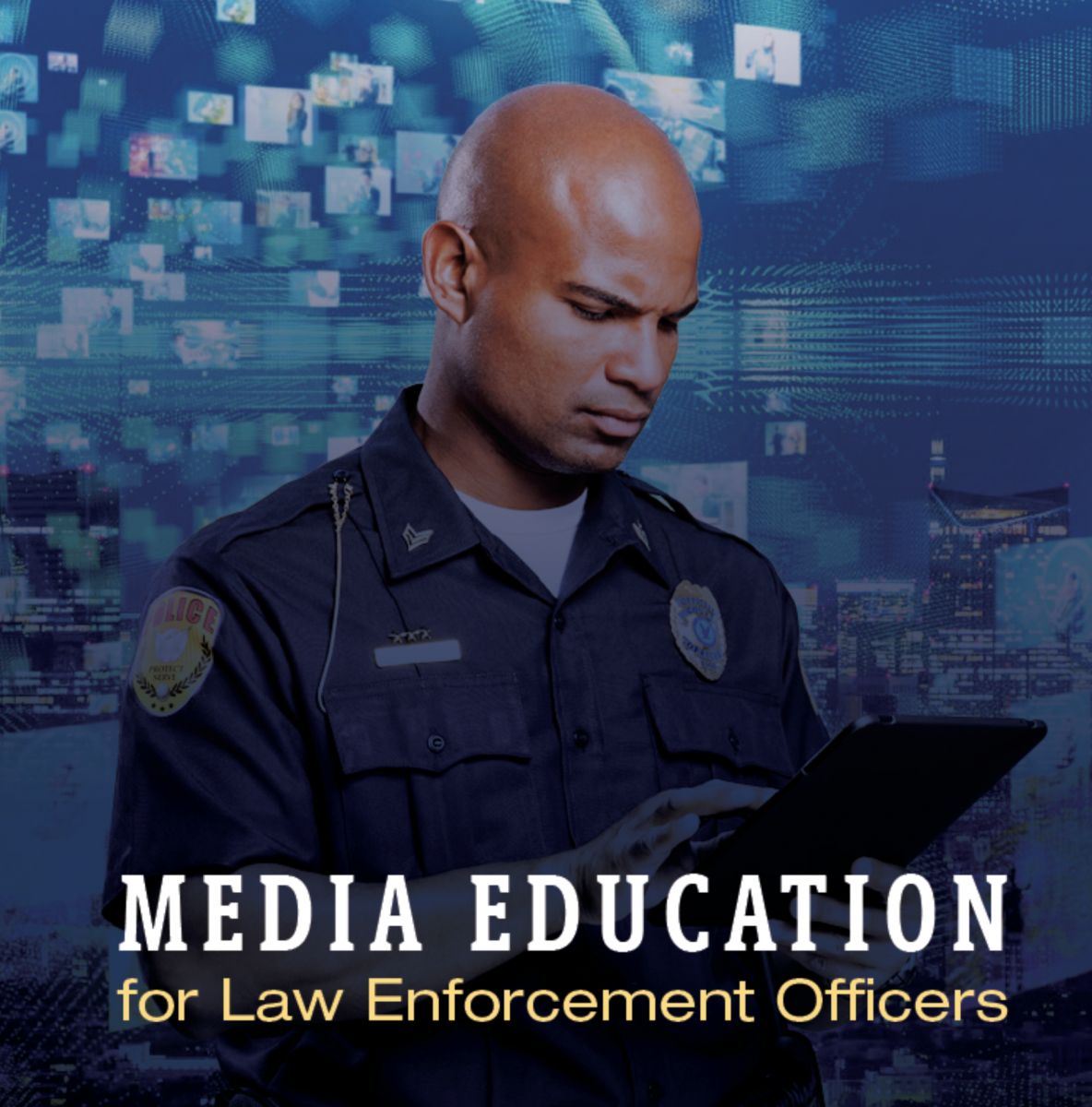Media literacy instructional practices help police instructors use video to build critical thinking and communication skills
 The Media Education Lab collaborated with the Austin (TX) Police Academy to create the first-ever professional development program for police instructors on media literacy education.
The Media Education Lab collaborated with the Austin (TX) Police Academy to create the first-ever professional development program for police instructors on media literacy education.
NEW! Read our article in Police Chief magazine!
Access print handouts, videos, curriculum, and slides for the professional development program:
Media Education for Law Enforcement Professionals Cost: $99.
Police instructors can learn to use media literacy instructional practices to improve how cadets and current officers learn from video. Instructors learn practical strategies to help them use video and digital media for learning purposes in ways that strengthen critical thinking and communication skills. Learning outcomes include:
- Examine the rising influence of video in American society today
- Understand how media messages about law enforcement shape perceptions of both police and citizens
- Recognize how videos that are used in police training can be used to normalize or disrupt patterns of racial bias, stereotypes, and inappropriate use of force
- Identify how video content and form can be used to reinforce or challenge power relationships
- Gain knowledge about why and how videos increase learning
- Learn strategies to guide your responsible selection of videos for learning purposes
- Apply instructional practices to the use of videos in ways that accelerate student learning
- Advance your own critical thinking skills as a media consumer and creator
- Discover opportunities to integrate critical thinking about media into the courses you teach
- Develop increased confidence in selecting and using videos for police training
This training program is evidence-based practice, which includes the integration of expertise/expert opinion; knowledge, judgment, and critical reasoning acquired through training and professional experiences; and information gathered from data and observations collected in the field.
Police instructors who experienced the program at the Austin Police Academy, Austin TX had this to say:
• I learned how to think critically when choosing media for my classes… and when I consume media myself.
• I learned how to use media to elicit critical thinking and transformative ideas in my training classes. How to engage the student with media and how media can help students learn and understand content.
• I learned to actively think about what I am hearing, seeing and using, from multiple points of view.
• I learned how media can be used to create discussion and critical thinking in the classroom setting and how to choose the right media for the job.
• I learned how emotions play a strong role in videos and how they can be intentionally manipulated.
• I enjoyed the open discussion and the hands-on classroom activities.
• It gave me new perspectives to consider when drafting future media productions for training.
• It was one of the first courses offered to in-service instructors to equip them with tools to help them teach once they get hired to instruct at the Academy.
• It was relevant, interactive, and occasionally even challenging (without being confrontational).
• It showed how to look at different forms of media and evaluate them in order to accomplish our objectives as educators.